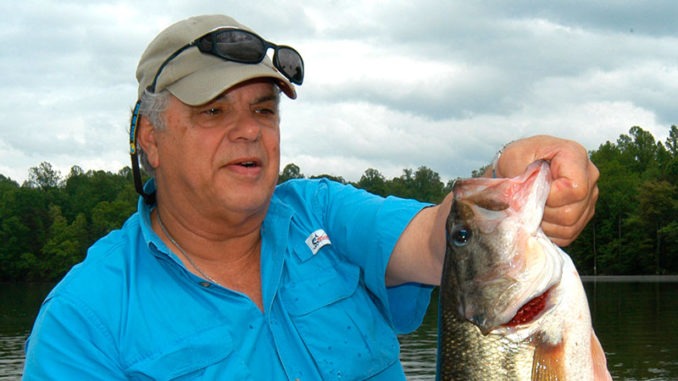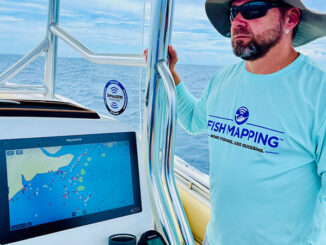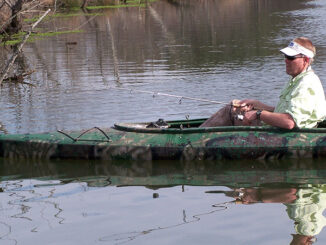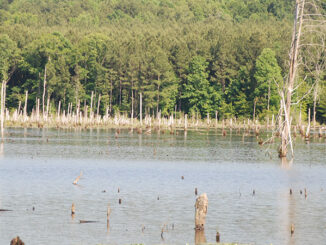
Tough month, until the end
September is a tough month; August is tough, but September can be worse – until you get to the end. Fish get suspended a lot in September, especially the first part of the month. They’ll start changing as the end of the month approaches.
Hallelujah!
Of course, tough fishing can have its rewards. September has been a big month for me as far as tournament fishing is concerned. I could go all year and win nothing, then I might win two or three tournaments in September at places like Buggs Island, Gaston, High Rock, even Guntersville in Alabama. When it got to the fall, that was my time.
It’s tough fishing, where you might catch 15 to 17 pounds and win. Those were my kinds of tournaments. Scratch out a limit of 3 or 3½ pounders and be confident on your trip to the scales.
The first of September and late September can fish totally different on most lakes. Early September, when a lot of guys are spending a couple of days in the dove field instead of on the lake, can be really tough. Many days, I’ve caught fish 25 feet deep. Later in the month, when bass start moving back in creeks, they also start moving up, and they get more active because of all the bait that’s migrating toward the backs of creeks.
Find brush
My favorite pattern, at the first of the month, is to fish around the mouth of creeks, maybe into the creek just a little bit. Brush piles used to be a big key; they’re the No. 1 structure in September, no matter where you are. You need to be fishing around brush. And if there are some rocks around the brush, that’s even better. This time of year, bass like anything sticking way out, like a roadbed or long, flat points with a contour break.
By the middle of the month, I’m looking from the mouth to halfway back, and by the end of the month, I’m starting halfway and moving back. This is the time when they’ll get on creek channel breaks or ditch breaks. Find your wooden cover, and if you get shell or rock bottom, you’re even better off.
Remember, you’re looking for places where bass can stop on their migration back into creeks. Long, flat points are perfect if there’s a good drop on them. Underwater islands, humps, they can be real good.
For baits, we have three choices: deep-diving crankbaits, big plastic worms and drop baits. You’ve got to have some deep-diving crankbaits, something that will run 20 feet deep, but you need to shy away from great, big crankbaits, because these fish are so finicky in September. Try to stick with 3-inch crankbaits. Next, some 8- to 10-inch worms – or lizards; they’ve been overlooked but are starting to make a comeback. I’ll fish them Texas-rigged with a big weight, like a ⅝-ounce weight. And September is the month for the big Super Spots, one of the best drop baits along with a 1½-ounce Hopkins spoon.
Drop it
When my team partner Jerry Lohr and I were winning a lot of team tournaments in the fall, we’d catch most of our big fish on a big worm or a drop bait. We’d always catch two or three big ones on a drop bait, because fish love a bait on the fall, in the fall. Nowadays, I’ve still got a couple dozen Spots, but I’ll also throw the ¾-ounce Warpig; that’s a good-sized, smaller bait that you can fish more slowly.
When I’m talking about a drop bait, I’m not really just dropping it down vertically into a piece of cover or structure. I’m making long casts with a Spot or a Hopkins spoon, jerking it off the bottom with my rod tip, and letting it drop back to the bottom. Most of your bites come on the drop, so you have to keep the slack out of your line and watch carefully to see if he knocks slack out of your line. You pick it off the bottom and let it fall back.
I’ve always used a flipping stick for drop baits because you need that length for leverage – at least a 7½- or maybe even an 8- or 8½-foot rod would be even better. You need a high-speed reel, something with about a 7.5-to-1 retrieve ratio. Lews makes one, a Pro TI, which has a really big handle that helps you keep up with the bait a lot easier. As far as line, I’ll fish mono, because it doesn’t fall so fast, but I really like to fish 60-pound braid – Berkley has some good braid – because the bait will fall at the same speed as mono, but if you get the hook in him with braid, he isn’t going to get away.
I don’t like fishing drop baits on fluorocarbon, because the line is already sinking and it will fall too fast. It might be invisible – and a lot of guys ask me about the fish seeing the braid, but when you’re jerking that big bait off the bottom, the fish aren’t looking at the line.
When I’m fishing a big, Texas-rigged worm, I like to fish a 6-foot-10 to 7-foot-4 medium-heavy rod. That action is a lot more forgiving if you happen to pick your bait up after the fall and the fish has already got it. But if you’re fishing 25 feet or deeper, you’ll need a heavier flipping stick to get a good hookset.
Falling for it:
Bass love to hit a lure on the fall, during the fall, and that’s why anglers shouldn’t overlook lures like spoons and other drop baits. Just keep your line tight and be ready, especially when that bait is falling.





Be the first to comment